Carved into an extinct cinder cone volcano–Rocky Butte–in Portland, the Grotto at the Sanctuary of Our Sorrowful Mother is pretty metal as far as Catholic shrines go.
It’s also more recent than its craggy basalt geology suggests–the Grotto was only completed in 1925, the brainchild of Father Ambrose Mayer and the first piece of what he envisioned would be an American counterpart to the sanctuary of Our Lady of Lourdes in France.
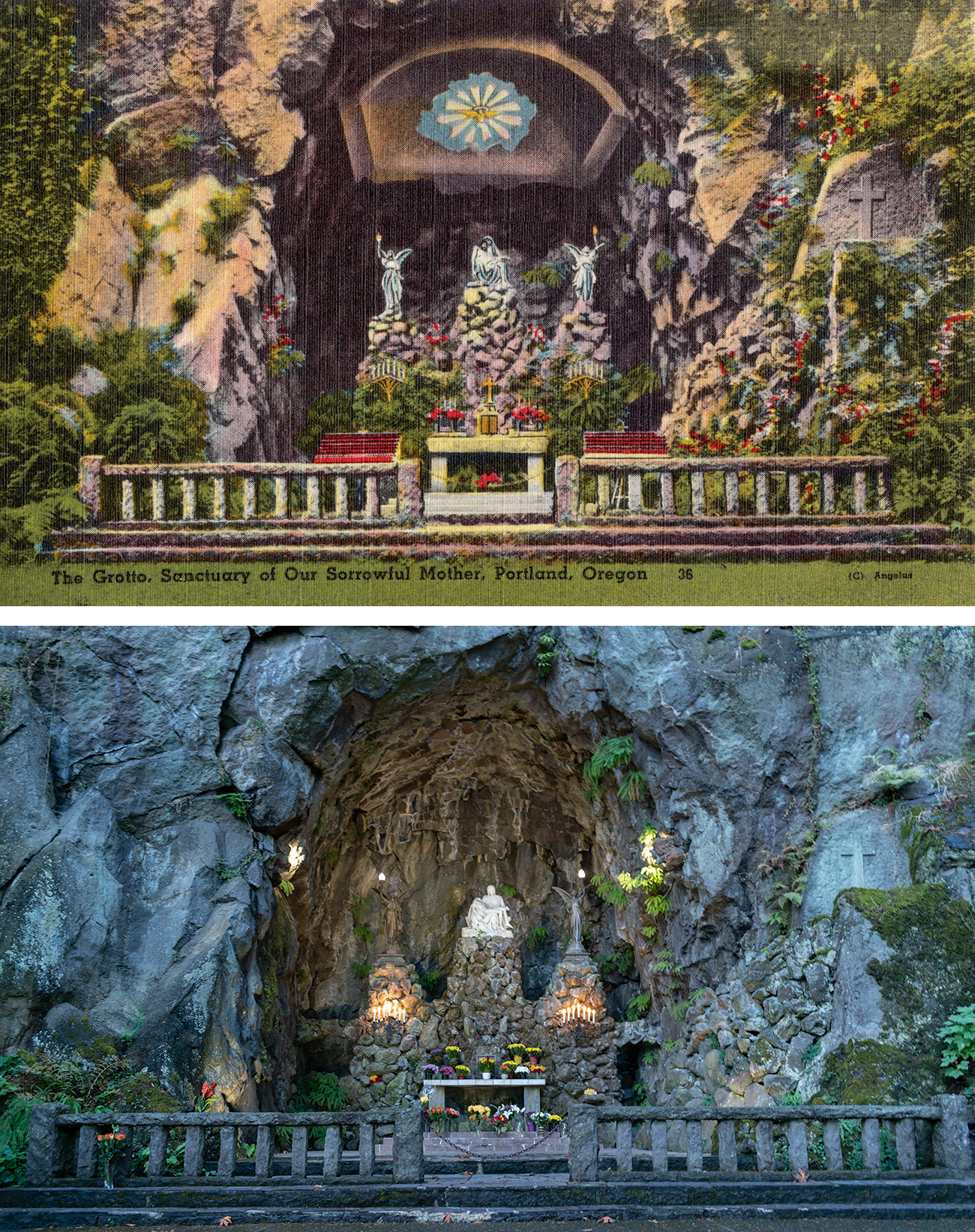
So, what’s changed? Not much, really. The biggest change is the removal of that angelic flourish on the roof of the cavern. It wasn’t artistic license–it did exist at one point–but if I had to guess, I bet it was removed for earthquake safety reasons. The votive stands have been moved away from the altar, but there’s still a large one nearby. While the greater sanctuary complex grew considerably over the last century, the Grotto remains stony, steadfast, unchanged.
Rocky Butte is an extinct cinder cone volcano, part of the Boring Lava Field that sits below this part of Oregon, and last erupted 285,00 to 500,000 years ago. By the turn of the century, that volcanic rock (Basaltic Andesite) was being quarried to help build Portland. In 1923, the Oregon–Washington Railroad and Navigation Co., a subsidiary of the Union Pacific Railroad, sold this land to the Servite Order of the Catholic Church as part of Father Ambrose Mayer’s effort to create a Catholic sanctuary in Portland.
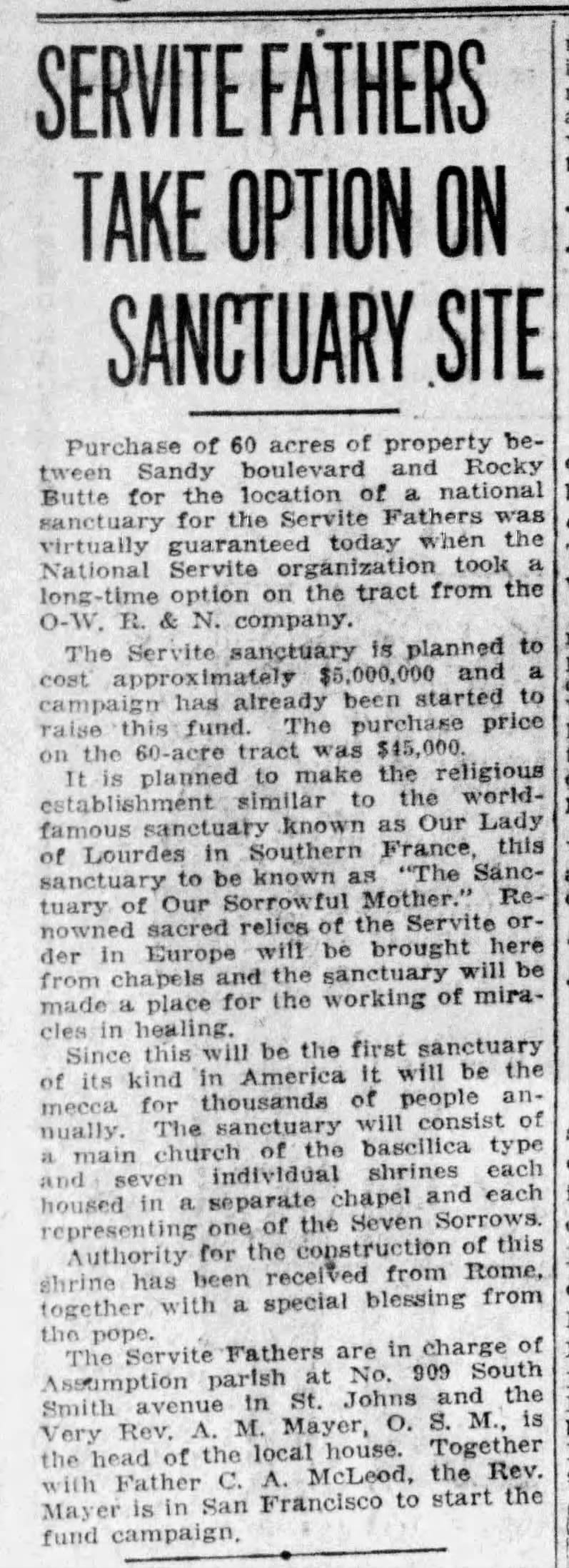

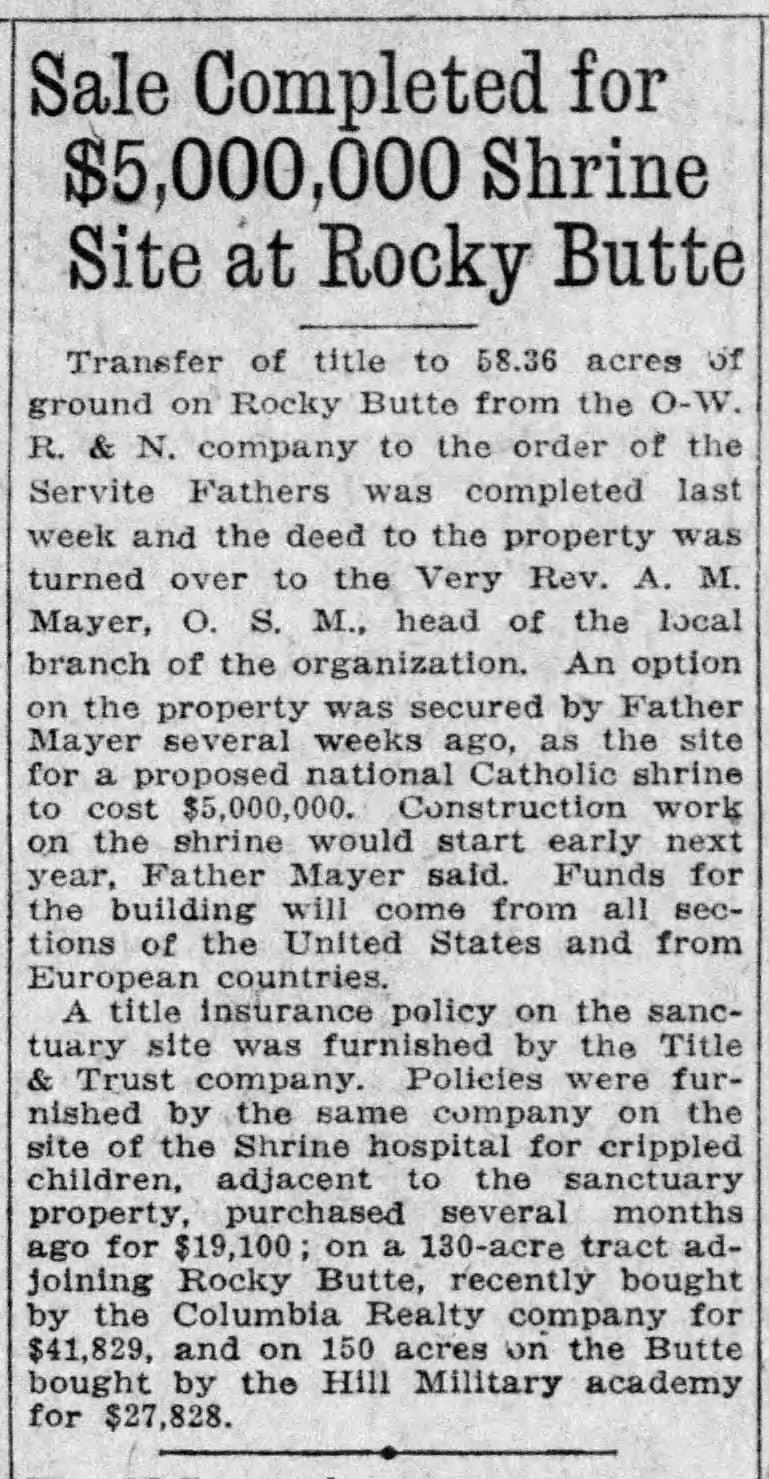
1923 articles about the Servite Order buying the site
The Servites are a mendicant monastic order like the Franciscans, Dominicans, Carmalites, etc.–urban, itinerant, and proselytizing amongst the people rather than living in seclusion. The Servites are specifically devoted to Mary, Mother of God–thus the name, Sanctuary of our Sorrowful Mother.
Father Mayer and the Servites envisioned a monumental complex, featuring chapels honoring each station of the cross and an enormous basilica atop Rocky Butte. They started with something on a much smaller scale, though–the Grotto.
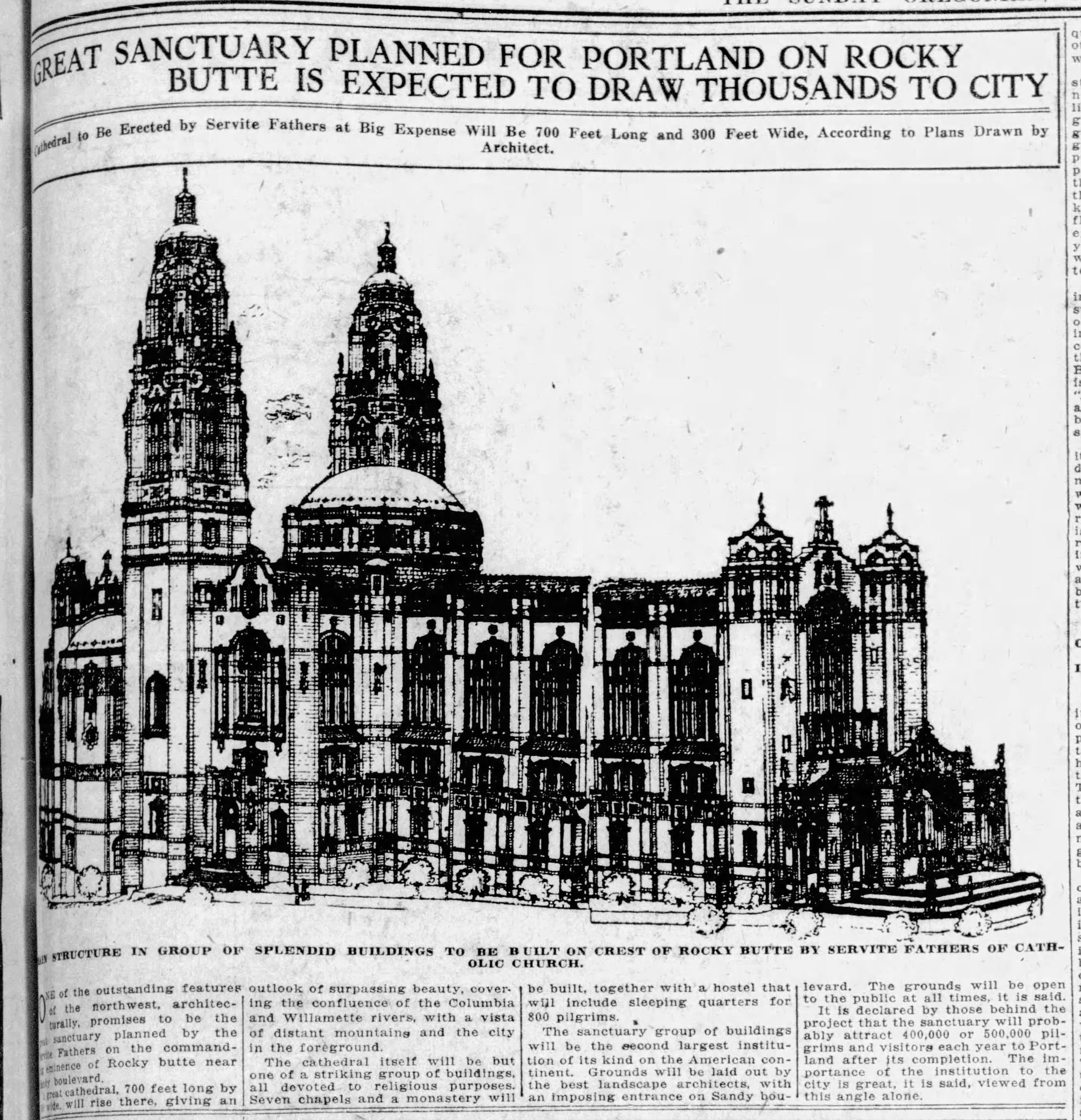
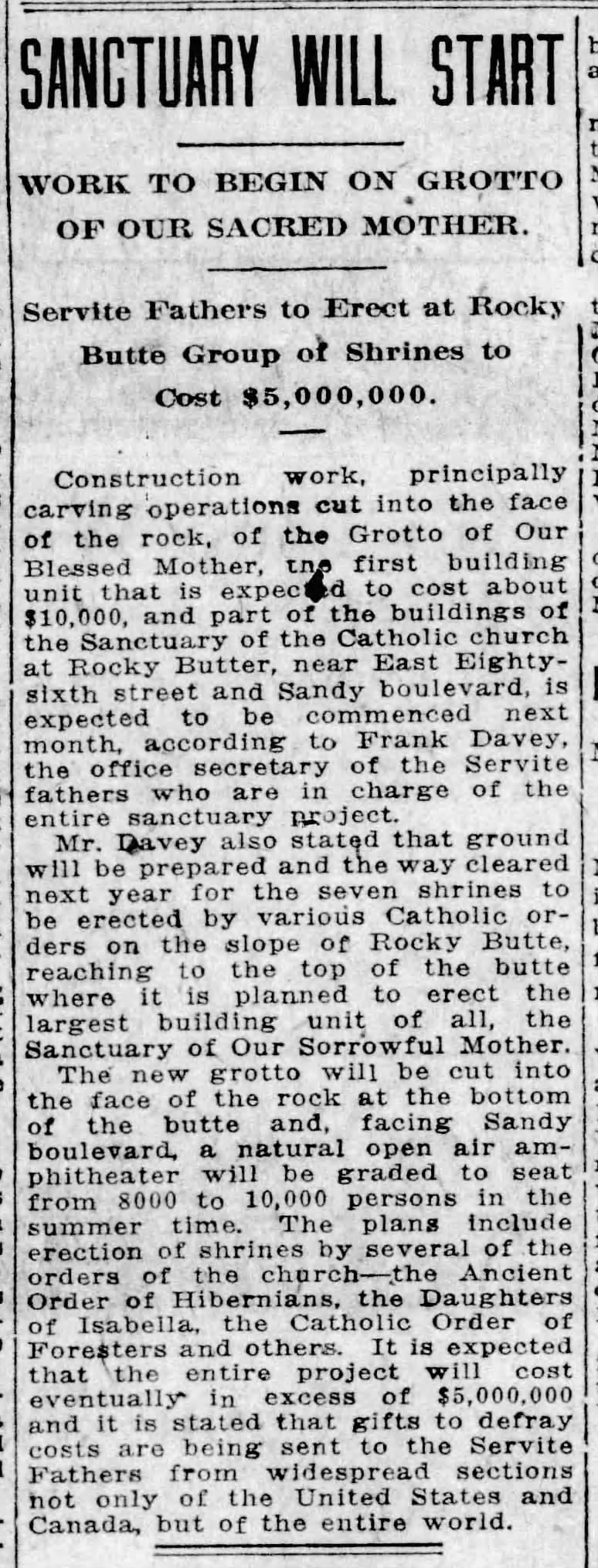
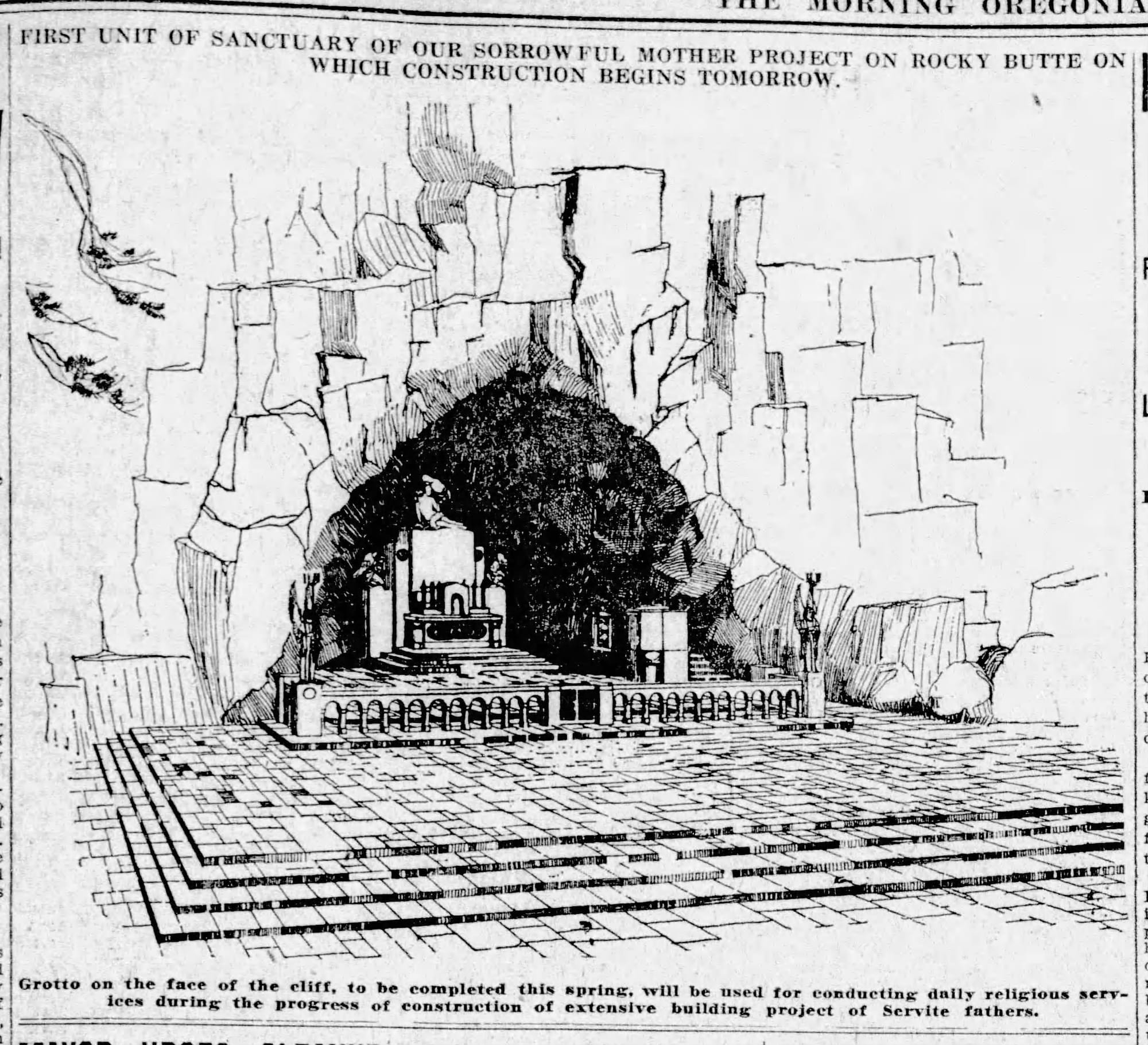

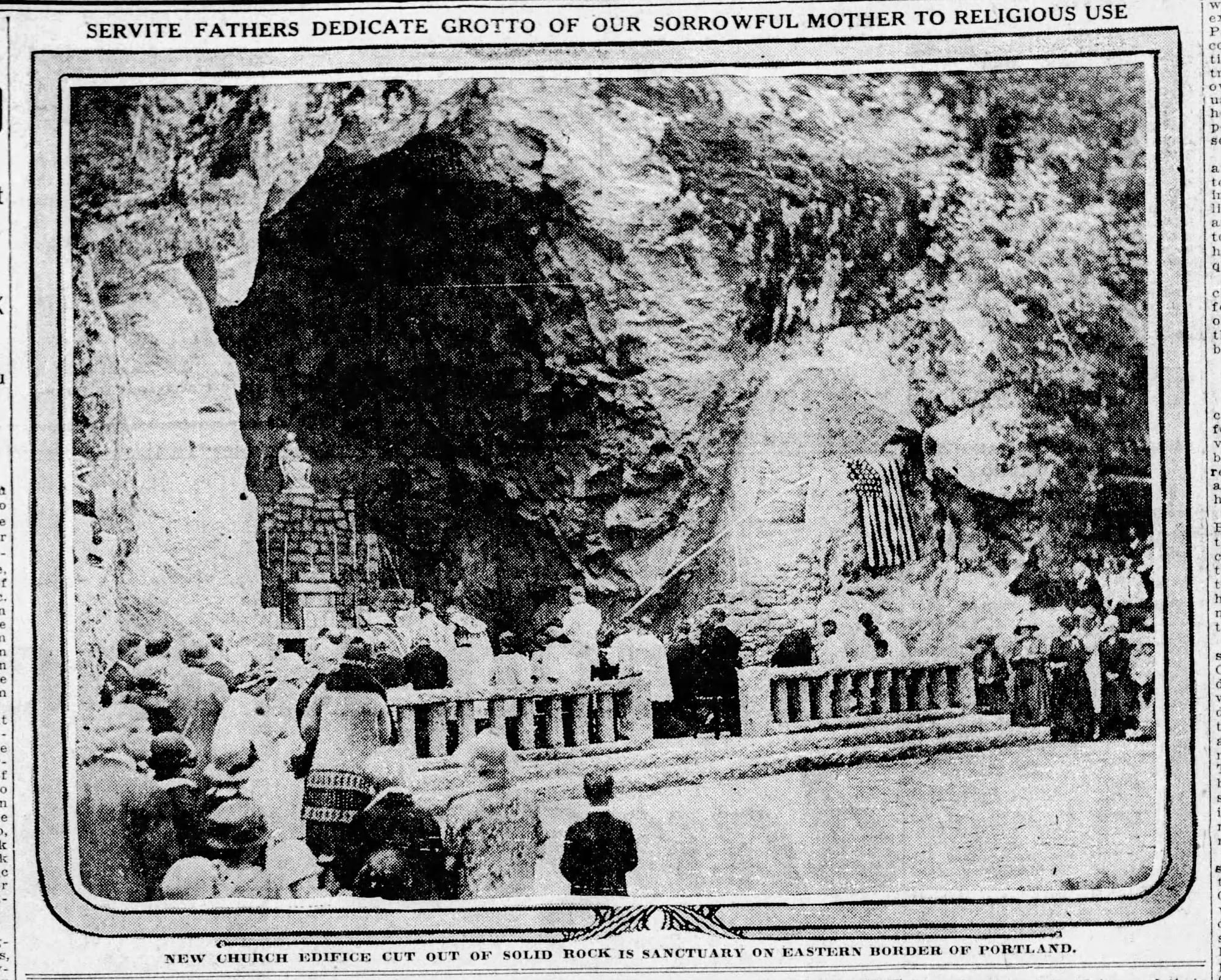

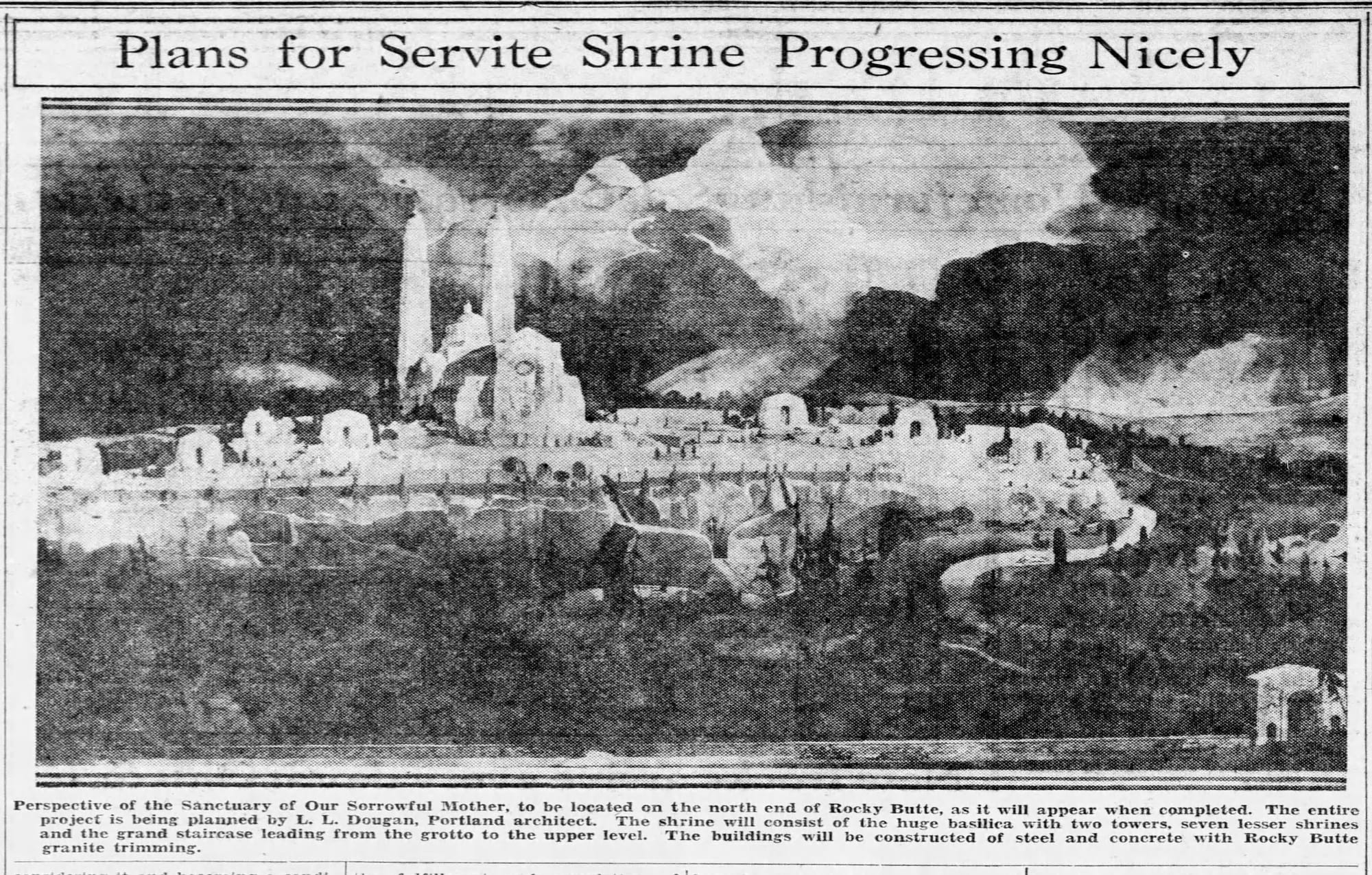
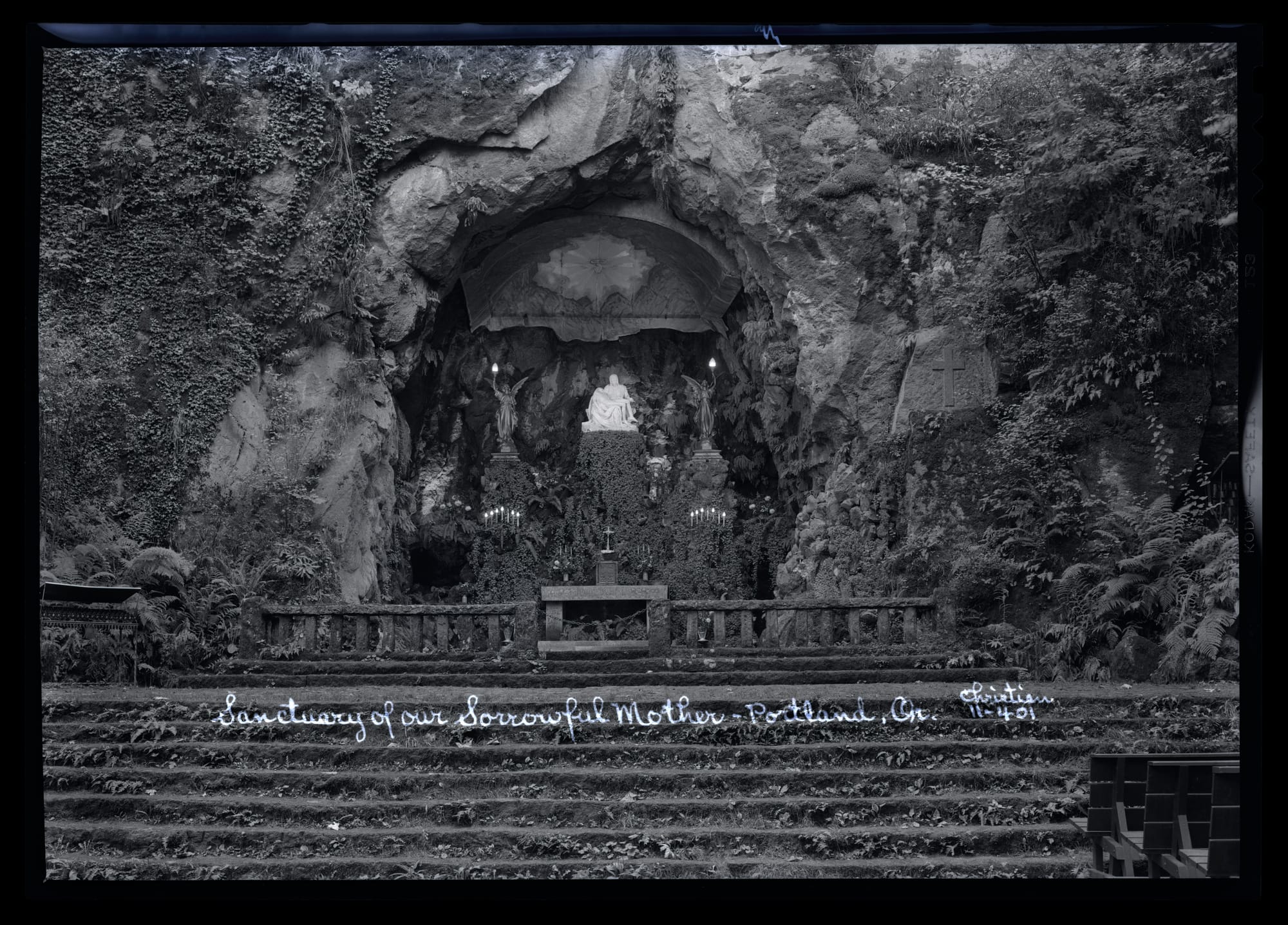
1923 article on plans for a large church | 1924-1925 articles about work starting on the Grotto and its dedication in July, 1925 | 1927 article on plans for the broader sanctuary | Undated photo, OrgLot1275_B3_Christian_11-401, Oregon Historical Society Library
Under the supervision of stoneworker J.R. Bouchard, in 1925 the Grotto was carved out of Rocky Butte, an altar installed, and the space dedicated by Father Amadeus Quigley from Chicago’s Our Lady of Sorrows. In 1934, the Grotto and the Sanctuary of Our Sorrowful Mother hosted the first-ever Marian Congress held in the US, with thousands of clergymen convening here to express their devotion to Mary, including the Servite Cardinal Alexis Lépicier.
The colossal basilica on top of the butte was never built, but the sanctuary added a church, a monastery, a welcome center, and a gorgeous modernist chapel over the years.
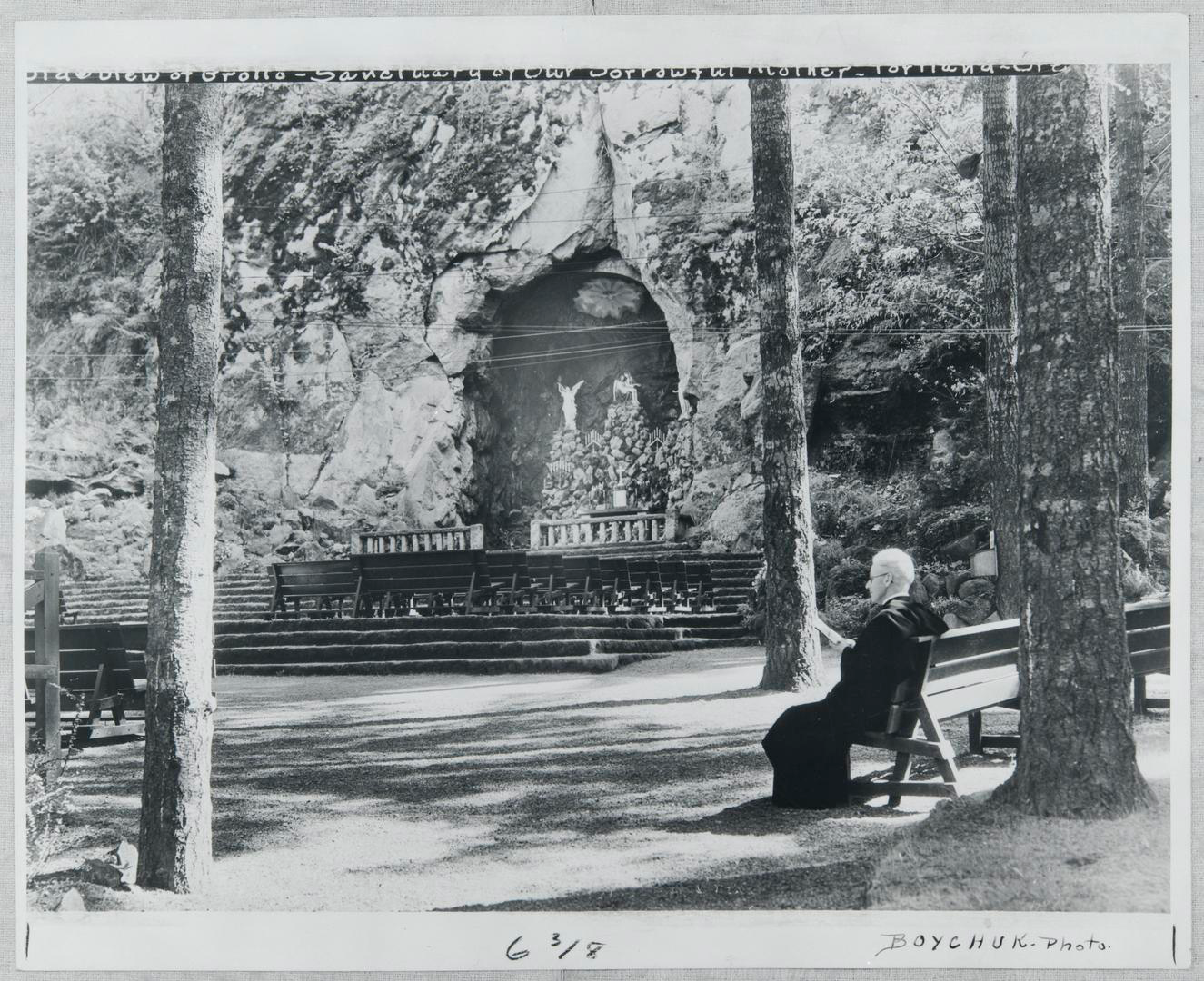
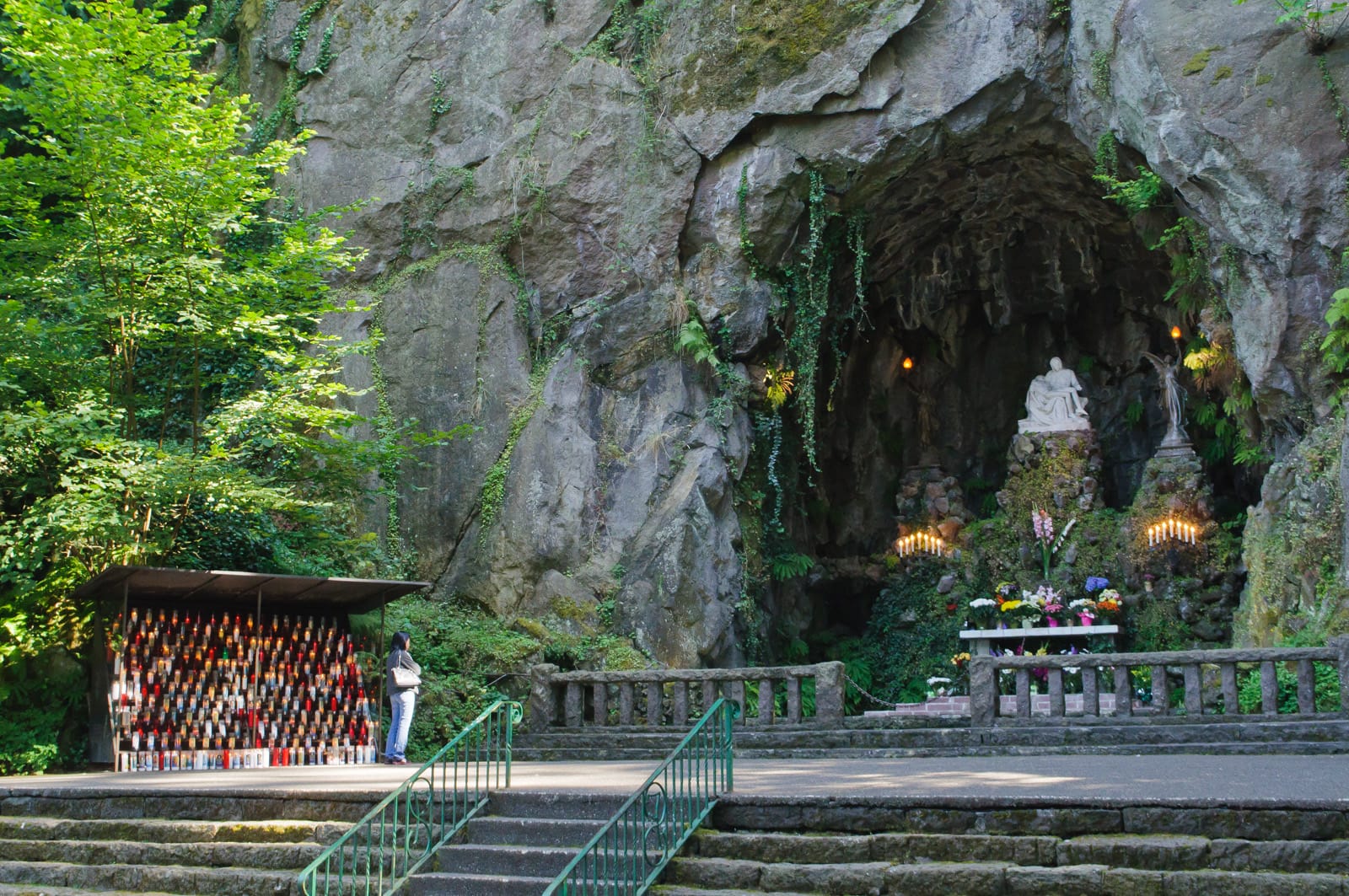
Undated, Angelus Studio Photographs, Special Collections and University Archives, University of Oregon Libraries | 2012, Scarlet Sappho, Wikimedia Commons
Nearly 100 years after its completion, the Grotto remains a compelling ecclesiastical space–lush, peaceful, a little awe-inspiring, but also very much the work of human hands.
Production Files
Further reading:
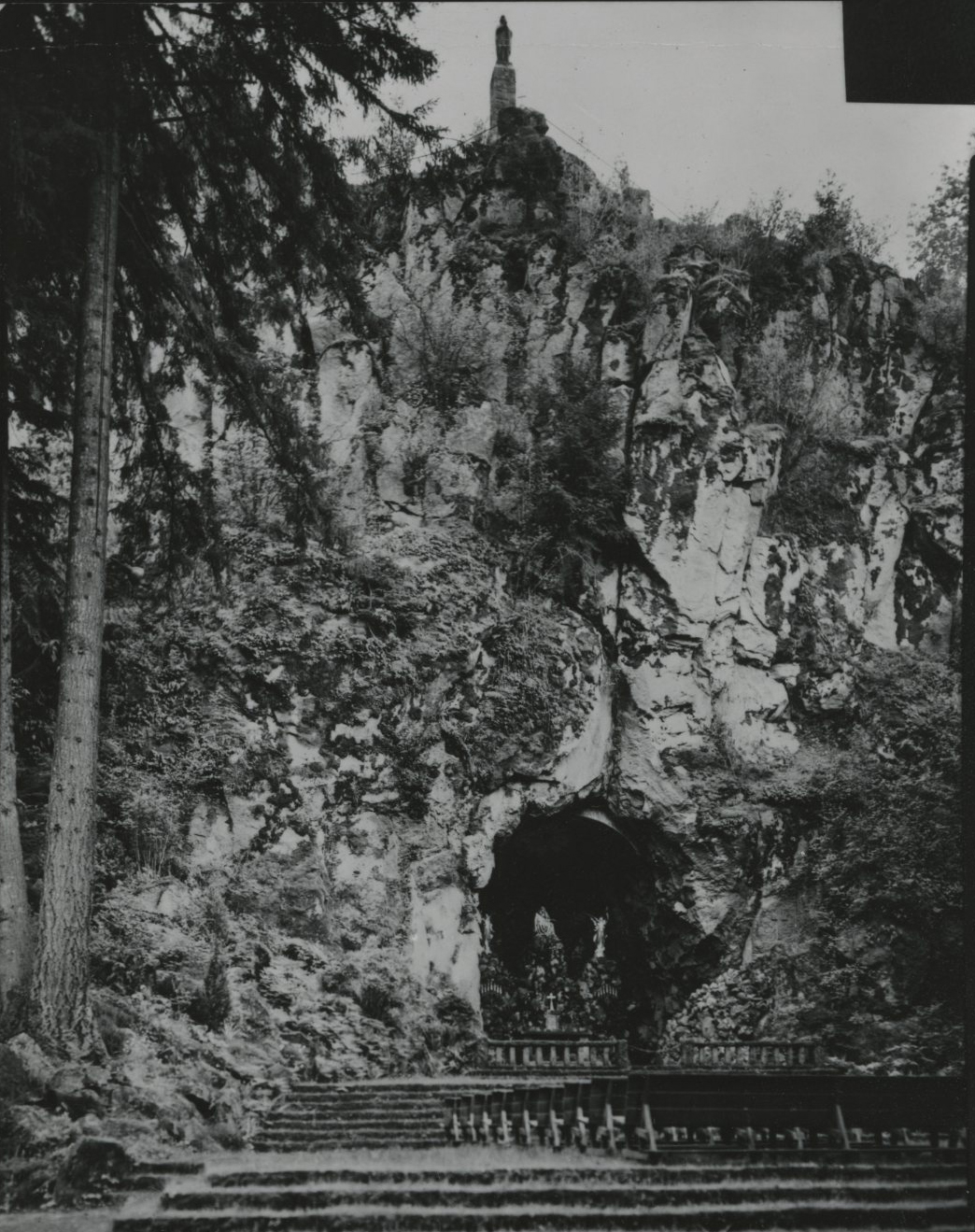

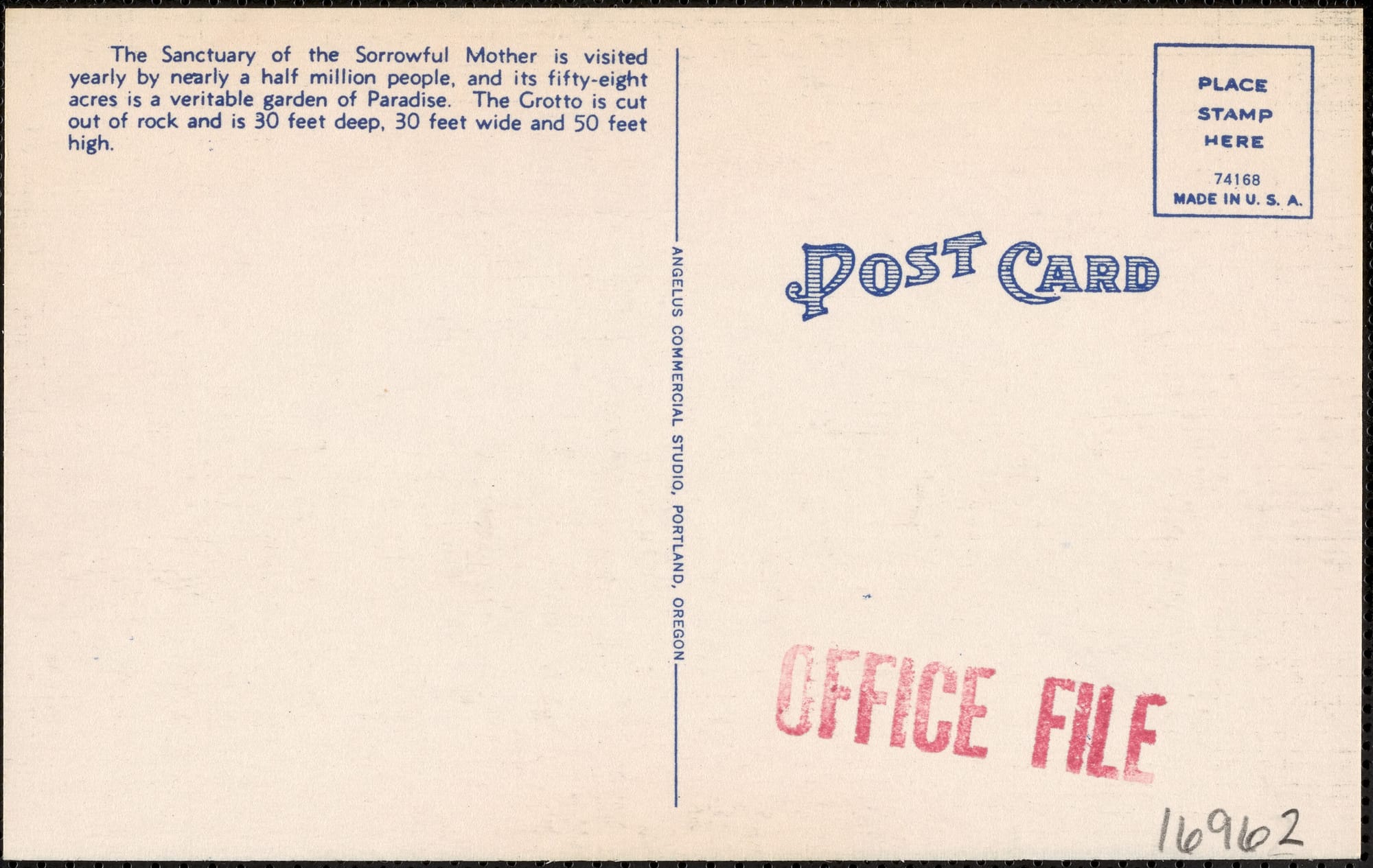
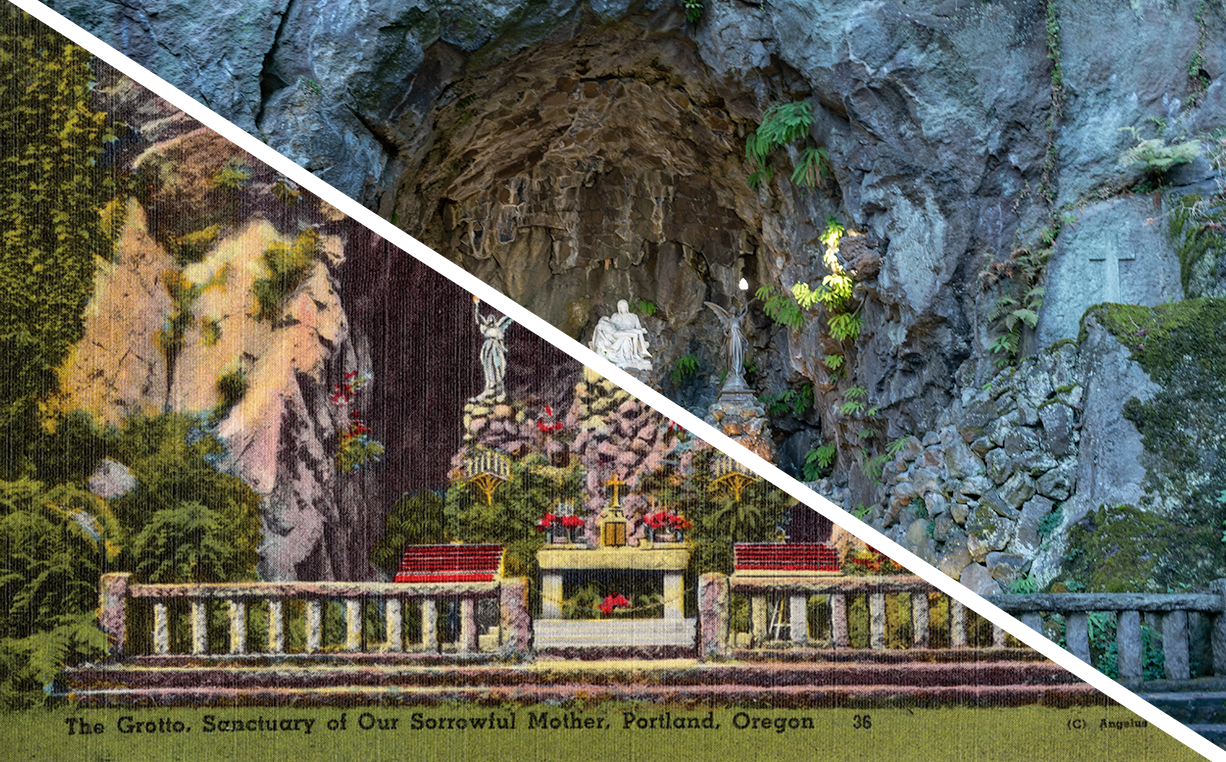



Member discussion: